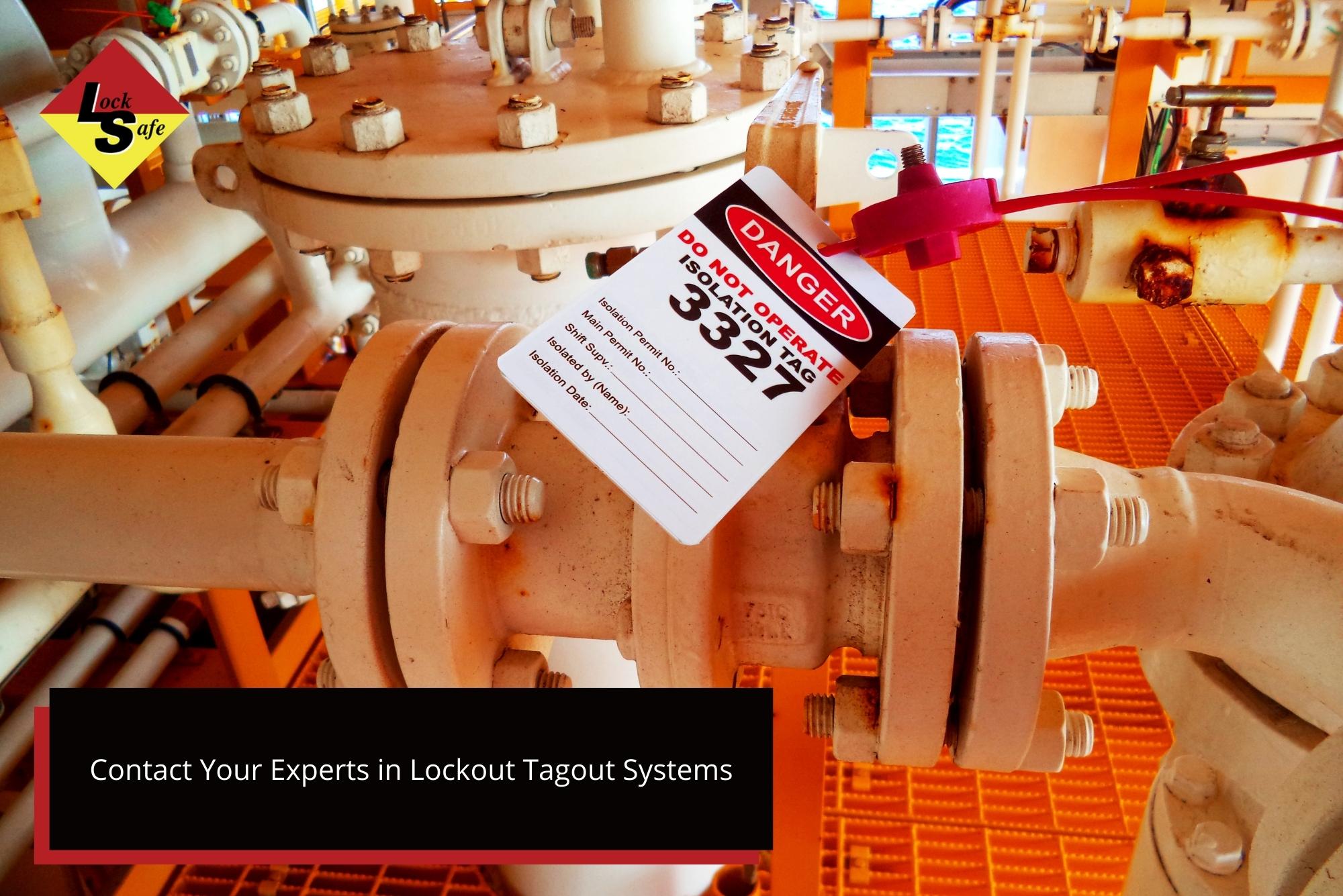Lockout tagout (LOTO) is a safety procedure that is utilised to ensure that dangerous equipment is properly shut off and not able to be started up, prior to the completion of maintenance or repair work. The purpose is that hazardous energy sources be “isolated and rendered inoperative” before work is commenced on the equipment in question. The isolated power sources are then locked, and a tag is placed on the lock identifying the worker and reason the LOTO is placed on it.

Australian Standards for LOTO
The Lock out, tag out (LOTO) is covered by the following standards:
- AS/NZS 4836:2011 – Safe working on or near low-voltage electrical installations and equipment
- AS 4024.1603-2006 – Safety of machinery – Design of controls, interlocks and guards – Prevention of unexpected start-up
Whilst regulations and standards exist, each workplace should develop their own isolation procedures to ensure maximum effectiveness such as:
- energy control program includes established procedures for using locks and tags
- the locks and tags themselves
- training workers on hazards of hazardous energy
- lockout/tagout procedures, policies, and equipment
- periodic reviews and inspections of the system (at least annually)
Below is an outline of a sample procedure with steps of LOTO Safety & Lockout/Tagout System for consideration.

Lockout/Tagout Safety and Lockout/Tagout System
Lockout/Tagout Safety and Lockout/Tagout Systemshould include the following and steps:
- Preparation
- Shutdown
- Isolation
- Lockout/tagout
- Stored energy check
- Isolation verification
- Re- Energise equipment
These steps of Lockout/Tagout safety are outlined below.
Step 1: Preparation
The first step of locking and tagging out equipment for service and maintenance is to prepare. This means acquiring the detailed equipment information by ensuring all equipment is identified correctly and accurately, including its specific location.
During the preparation phase, the authorised worker must investigate and gain a complete understanding of all types of hazardous energy that might be controlled. It’s important to identify the specific hazards and the means for controlling that energy.
Step 2: Shut Down
With planning complete, the actual process of powering down and locking out machines begins. At this point, it’s time to shut down the machine or equipment that will be serviced or maintained.
It is important to notify all affected workers when maintenance is going to be performed, including the timing of the work, and how long the equipment may be unavailable.
Step 3: Isolation
The next step of the lockout/tagout procedure is to isolate the machine or equipment from any source of energy. To ensure the workplace safety and reduce the potential for damage, specific, step by step instructions on how the machine is disconnected must be provided. This may mean any number of things, such as turning off power at a breaker or shutting a valve.
Step 4: Lockout/Tagout
With the machine or equipment isolated from its energy source the next step of lockout/tagout is to physically lock and tag out the machine. Whether the primary energy sources include electricity, steam, water, gas, compressed air, or others, don’t assume that the person performing maintenance will know the correct procedure to follow. Again, be specific on what needs to be done.
During this step, the authorised worker will attach lockout and/or tagout devices to each energy-isolating device. The point is to apply the lockout device on the energy-isolating device in a way so it stays in the “safe” position and cannot be moved to the unsafe position except by the person performing the lockout.
Tagout refers to applying a tag on the device as well. The tag includes the name of the person who performed the lockout and additional information.
Step 5: Stored Energy Check
Even after the primary energy source has been disconnected (step 3 of the lockout safety process) and the machine has been locked out (step 4), that doesn’t entirely guarantee that there’s no hazardous residual energy such as trapped heat in a thermal system, fumes that may need to be vented, or even tension in a spring assembly within the machine or that it’s safe to perform maintenance.
Through this phase, any potentially hazardous stored or residual energy must be relieved, disconnected, restrained, or made non-hazardous in some other way.
Step 6: Isolation Verification
This last step is all about ensuring the following has taken place, which is the disconnection of all primary and secondary sources of energy, followed by a test for dead which must be performed to verify the isolation procedure has been successful.
This process has shut down the machines, isolated them from their source of power, locked them out, and checked for hazardous stored energy. However, the final step is to double-check that it was carried out correctly and it’s safe to work on the machine or equipment.
At this point, an authorised worker verifies that the machine has been properly isolated and de-energized.
Step 7: Re-Energising Equipment
On the completion of maintenance or repairs, when all tools and other materials have been removed, the machine can be brought back into operation. The procedure should contain the precise steps that are involved, in the correct sequence.
It’s crucial to keep procedures up to date as the regulations, equipment and operating procedures may change over time, and the lockout/tagout program needs to reflect those changes. Some changes may be minor that only the people working directly with the equipment are aware of them. That is why it is important to review all the lockout/tagout procedures regularly to verify their accuracy.

Contact Your Experts in Lockout Tagout Systems
Locksafe are experienced in industrial lockout products, including safety products and procedures. We are always available to assist to make sure your site and the industrial machines you use are isolated and safe before maintenance by calling our team on 08 9455 7255 or leaving us a message.














